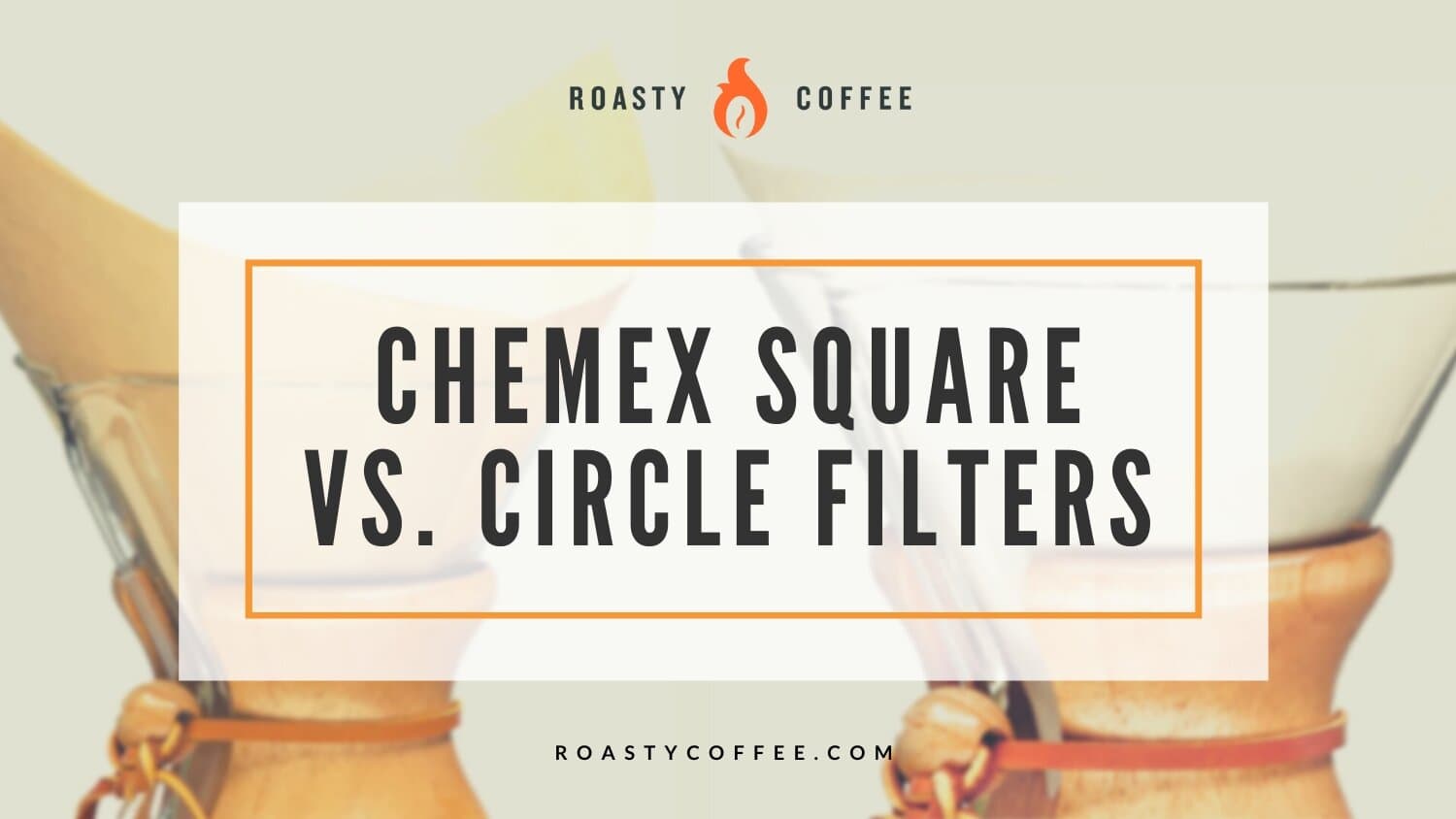The Chemex is my favorite pour-over brewer. It’s a calming ritual I enjoy each morning and makes the perfect cup of coffee to start my day!
Brewing on a Chemex has lots of different elements and factors, but one that’s often asked about is filter preference.
You can have reusable filters that are made of fabrics or metals, or you can use the specially designed Chemex paper filters that give your coffee a smooth, clean taste.
These three-layer thick filters come in two different designs – square or circle. It’s often asked: what’s the difference? Does it change the coffee taste? Is one better than the other?
We will answer all this and more in our comparison of square vs circle Chemex filters, so keep reading below!

Square vs. Circle Chemex Filters
Chemex sells a few types of paper filters and each variation has its pros and cons. There’s a white or brown paper you can choose from. The brown filters are compostable but they slightly change the taste of the coffee.
There are both flat and pre-folded options you can choose from. They are usually cheaper if bought unfolded, but require more effort on your part and an extra step with each brew.
If you opt for the unfolded filters, you can check our full tutorial on the best way to fold Chemex filters.
Lastly, you can get a square or circle-shaped filter. There is no difference in taste between these two filter varieties. However, only some of the Chemex styles support a square filter, whereas all Chemex styles can use a circular-cut filter.
When first designed, the Chemex used a square filter, so it’s often considered the “classic” Chemex look. However, since coming out with smaller 3-cup Chemex brewers that only support a circular filter, it’s common to see circular filters used more frequently.
There is no difference in the design that makes one better than the other, but you can choose between the circle and square filters based on your own personal aesthetic and which you prefer to use while brewing.
I personally prefer the Chemex square filter, as it was the variety I used during my first time brewing on a Chemex. I find them easy to remove as the paper pokes up above the glass rim and is easy to grab and throw away without having to touch a hot, wet, coffee-stained filter.
Others prefer the even rim that the Chemex circle filter provides. As well, it’s generally considered easier to distribute your water evenly with circular filters as the filter doesn’t have the pointy corners of the square shape.
But at the end of the day, it’s down to what you prefer aesthetically and in your brewing and which style better fits your budget.
Why Use a Chemex Filter?

Let’s be real – Chemex filters are significantly more expensive than a typical coffee filter. They are also much bigger, making them harder to tuck away and out of sight. So why all the fuss? Won’t a regular, more affordable filter do the trick?
In short, yes, a regular cone coffee filter will absolutely work in a pinch. What makes Chemex filters so great, though, is the thickness of the filter.
It is three times thicker than regular coffee filters, which is what gives your coffee such a smooth and clean taste. All the oils and find grinds are kept out of your coffee, leaving just the delicious natural flavor of the coffee bean and roast.
Chemex filters are one of the perks of brewing on a Chemex filter and they add a lot to the quality and flavor of your brew.
They’re also bigger in size, making them secure to brew in without the fear of the filter falling down into the carfare, which might happen with other paper filters.
Brew with Confidence
We hope that this comparison between square-cut and round-shaped filters was insightful to you in making the best filter choice for your brewing routine. Remember that coffee is a fun hobby that you get to curate to your exact preference.
Whether you end up with pre-folded circle filters or fold your own square ones, we want you to be enjoying quality coffee that brightens you up with each sip!
FAQ
What Are the Alternatives to Using Paper Filters?
If you’re not sold on the idea of paper filters, there are many other options on the market. From reusable fine-mesh metal filters to hemp filters to cloth filters, there is something for everyone!
You can get a full look at the range of options and the best place to buy them in our guide to reusable filters for Chemex.
Which Chemex Styles use Chemex Square vs Circle Filters?
All of the Chemex styles can use a circular paper filter, but the small 3-cup Chemex can only use half-crescent filters that can only be made with circular filters. Square filters won’t work in small serving styles.
Which Grind Is the Best for Chemex Filters?
When brewing with a Chemex, you’ll want to have a medium-coarse to coarse grind. Depending on the filter and roast type, your grinds should be anywhere between table salt to sea salt size.
When using the Chemex paper filters, your coffee should take 1-2 minutes to drain through the grinds and filter. If water is rushing through quickly, your coffee will be weak, under-extracted, and your grinds too coarse. If your brew takes over 5 minutes and leaves a sludge in the filter, you’ve ground too small.
Metal and cloth filters drain faster than paper filters and will need on the finer side of coarse grind. See our top grinder recommendations for Chemex.
Happy Caffeinating!









